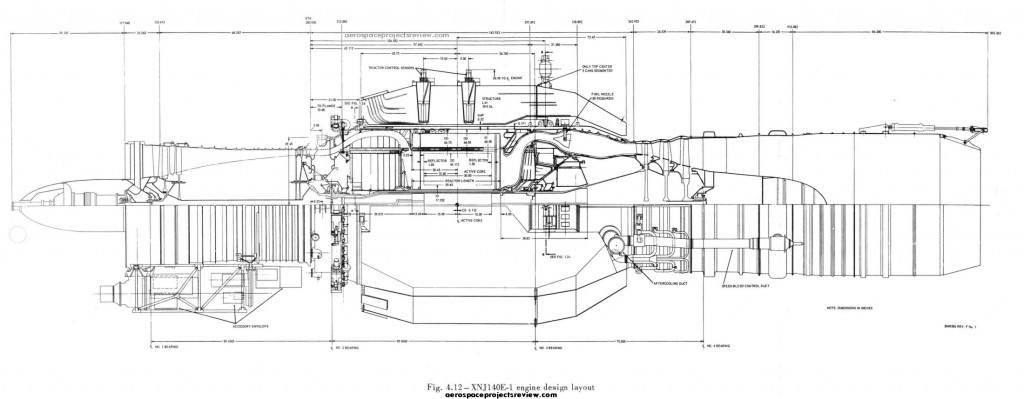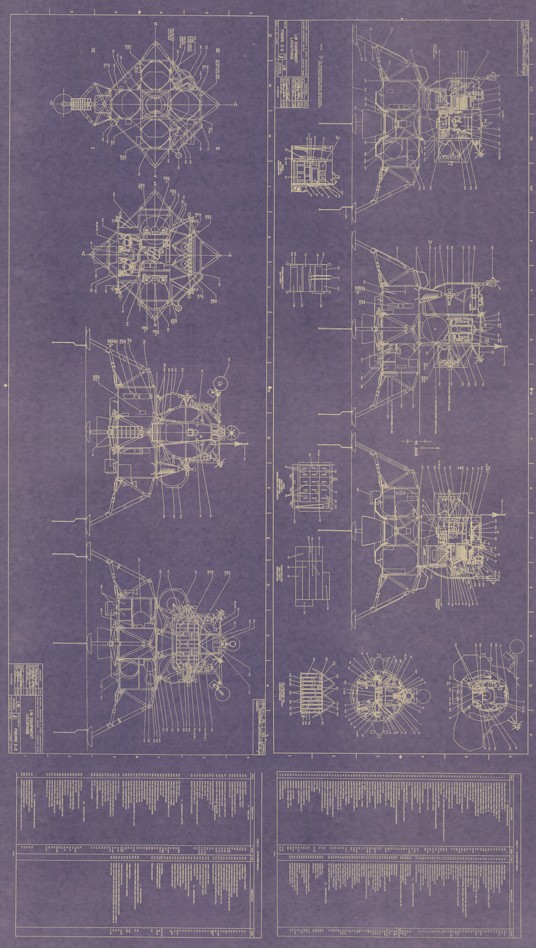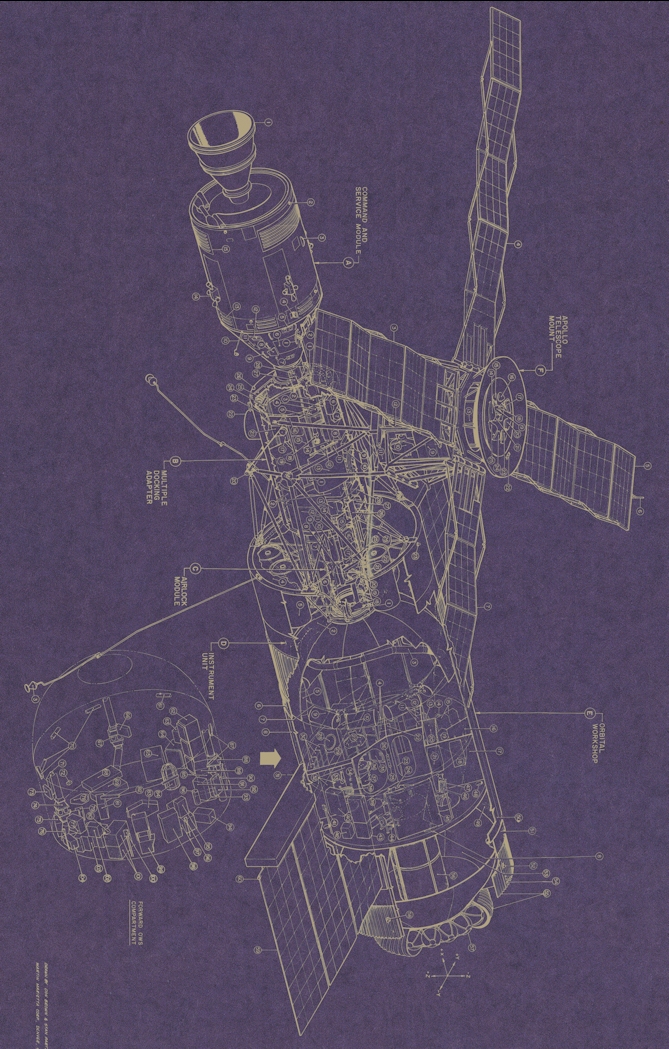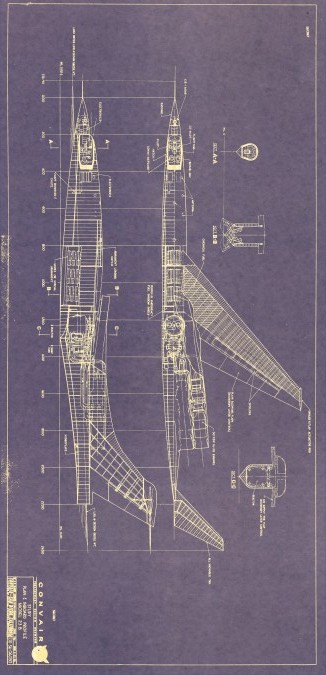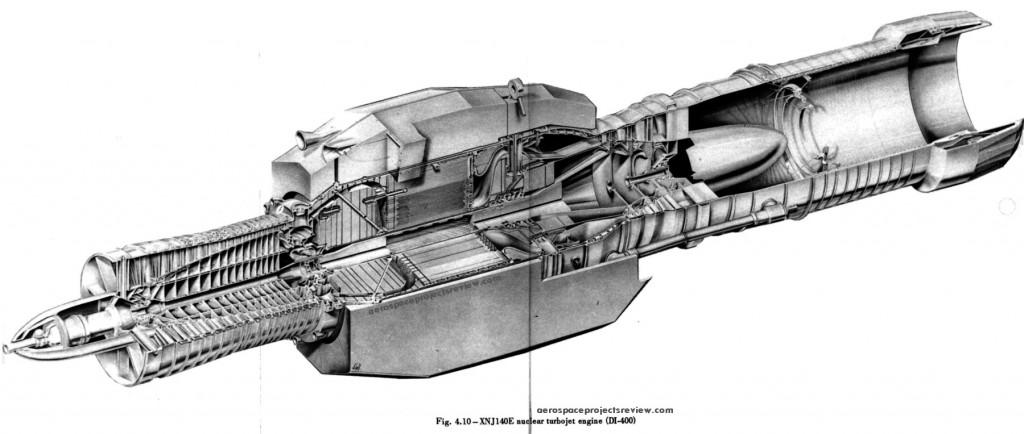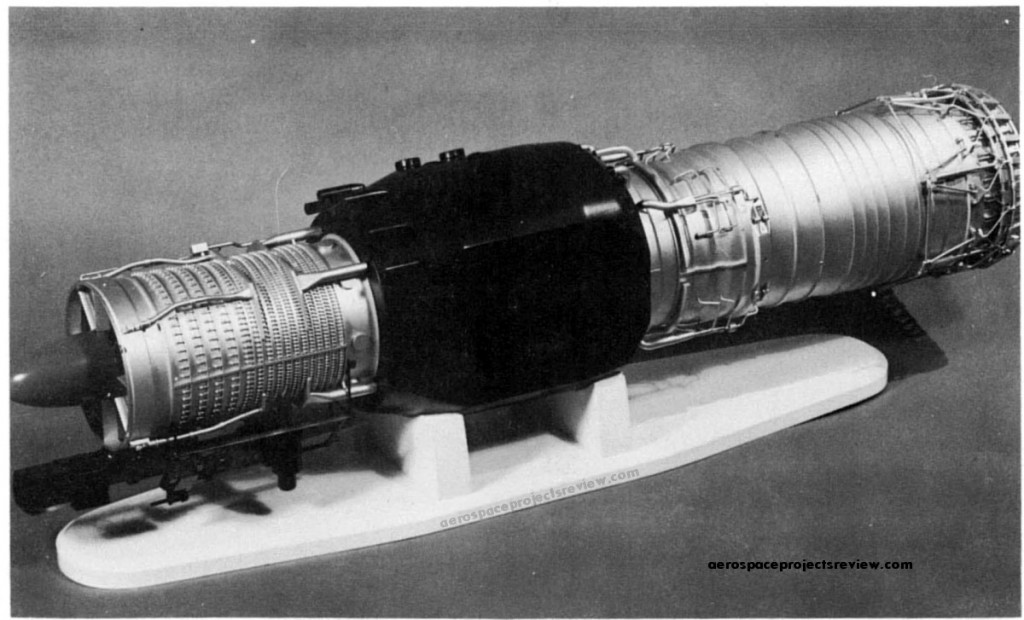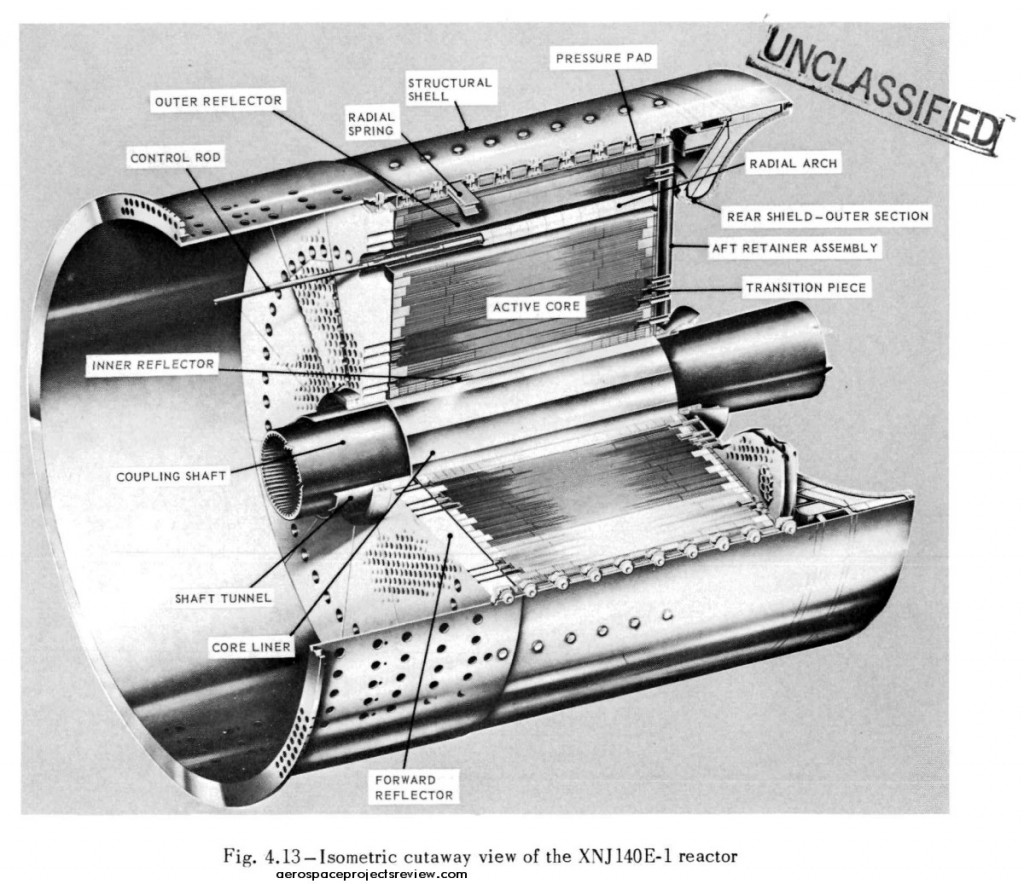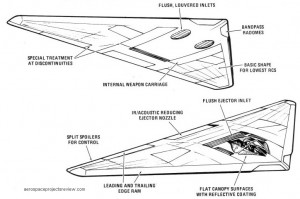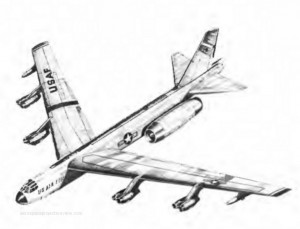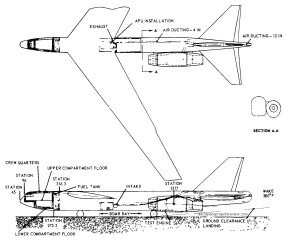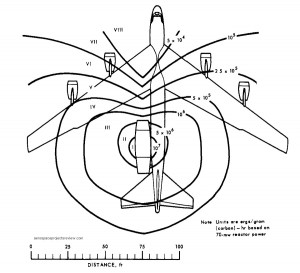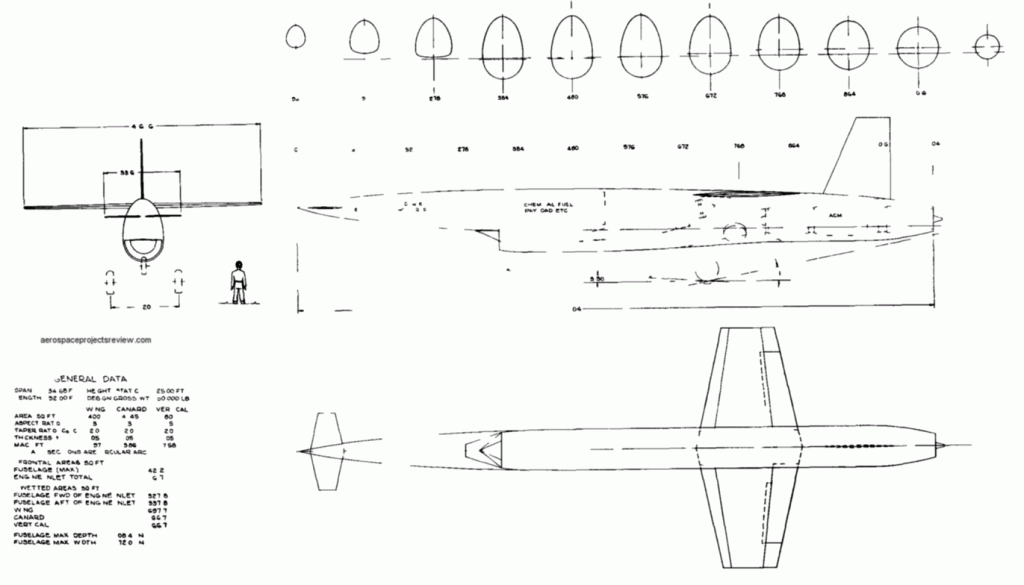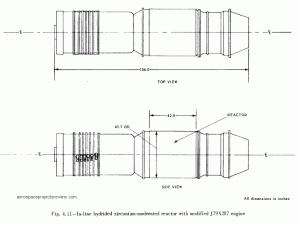A layout illustration of the General Electric XNJ140E-1 nuclear turbojet. This is the developmental engine, not an operational engine, and does not seem to have a chemical afterburner.
After xkcd ran the Up Goer 5 image that referenced my website, I put the 74-inch Saturn V print back into production on a limited basis. Due to the print shop that was *supposed* to do this completely flaking out, and the sudden and wholly unexpected arrival of Christmas and some cross-continent traveling, the process was a bit of a mess and took longer than expected. But I got the prints printed and shipped. NOTE: future prints will be printed by yet another print shop, using heavier weight paper than was used on the first run of Saturn V’s, and a better printing process. I’ve had a few test articles printed, and they’re better than the first Sat V run in all respects.
I received several emails to the effect that “74 inches long is nice, but how about printing them at a specific *scale?*” And you know… that’s not a bad idea. The 74-inch Saturn V print turned out to be fairly close to 1/72 scale… if it was 71.2 inches long, it’d be 1/72 scale. So… huzzah! Future prints will be at 1/72 scale. The three inch shorter length will hardly be noticable.
I have a number of related illustrations that would go well with this. Most importantly, I will also produce a 1/72 print of the Saturn Ib. It’s done in the same style and by the same organization (Marshall Space Flight Center) as the Saturn V. In this case, the copy of the diagram I have was a black and white line drawing, not a blueprint like the Saturn V. From an engineering standpoint, B&W lines are what you want… but for the standpoint of art, blueprint rules. So… I reworked the Saturn Ib diagram into a proper blueprint, using color cues from the Saturn V. At 1/72, the print will be 42.3 inches long.
I also converted a similar drawing of the Saturn Ib with UA-1205 120-inch solid rockets boosters (as used on the Titan IIIC), also produced by MSFC. The original was not quite as clear, but it still looks pretty spiffy at 1/72 scale. It’s 42.6 inches long.
I’m also looking at 1/144 versions of these. The Saturn V drawing on its own at 1/144 is a respectable 35.6 inches long… but only 5 inches wide. It looks a little strange at that size. So what I’m planning on doing is creating a print with both the Saturn Ib and V together at 1/144 scale. It’ll be about 35.6 inches long, about 10 inches wide. The simplest solution would be to simply put the two images together, but that seems a bit lazy. So I’m considering two options:
1) Get rid of the borders and title blocks
2) Create a wholly new border and title block. Since this won’t be accurate to the NASA original, the title block would be all-new.
Given that the Saturn Ib is substantially shorter than the Saturn V, this leaves a good deal of blank space above it. This could be filled with data, a fat title, more diagrams (the Apollo CSM, at a different scale perhaps), or just blank space. Advice sought.
Also: not to any particular scale, a “Saturn V Apollo Flight Configuration” cutaway diagram of the Saturn V with parts callouts. This was also originally B&W and converted to blueprint. It will be 18 inches wide by about 35.4 inches tall.
Also: not to any particular scale, a set of Lunar Module equipment location diagrams, also converted from B&W to blueprint. This will be about 32 inches wide by 18 inches tall.
Currently being worked on: a big cutaway blueprint of Skylab. You’ve probably seen a version of this illustration before, but not at this size or clarity. It has been painstakingly assembled from a series of hi-rez photos of the original I took at a NASA archive, and is being converted to “blueprint.” The illustration shown below is a mockup; it’s not quite ready yet. There will be text descriptions of all the callouts. It’s currently looking to be about 40 inches by 24. I may do a smaller version (perhaps as a cyanotype print at 18X24 inches).
And because why not: An upconverted blueprint of a Convair design for a supersonic nuclear powered seaplane bomber from 1956. Not to any particular scale, just the same size as the original I have on-hand, it’ll be about 22.5 by 11 inches.
Below are JPGs of what I’m working on. These have all been scaled down to 10% of full size; this way you can compare sizes directly. NONE ARE AVAILABLE FOR SALE JUST YET. I would like to get an idea of how much interest there is before setting the print shop (a *third* shop… slightly more expensive than the one that ran the Saturn Vs, but I like their work better) going. So if you are interested in any of these, let me know via commenting or (preferred) email to scottlowtherAT up-shipDOTcom. Let me know how many of which you’d be willing to buy.
Prices are tentatively expected to be:
1/72 Saturn V: $35
1/72 Saturn Ib:$20
1/72 Saturn Ib w/SRMs: $20
1/144 Saturn Ib/V: $18
Sat V Apollo flight configuration: $30
LM Equipment: $27
Skylab: $38
Convair nuke seaplane: $12
The General Electric XNJ140E nuclear turbojet was proposed in March 1960 to meet then-current DoD guidelines for the nuclear aircraft program. It utilized a single X211 turbojet mated to a beryllium oxide reactor, a change from the prior XMA-1 engine standard which had one reactor powering two X211 turbojets. Ground test for the XNJ140E was scheduled for December 1962, with flight testing to begin in a Convair NX-2 in 1965.
The XNJ140E was designed for a lifespan of 1000 hours under power, at which point it was to be removed from the aircraft and overhauled. The XNJ140E-1 was to be the developmental model, and would have had an estimated dry weight of 60,600 pounds. Of that, 18,320 pounds were turbojet, while 42,230 pounds were reactor, shield and controls.
The reactor assembly was 33 inches long and 62 inches in diameter, formed from 25,000 hexagonal tubes made from yttria-stabilized beyllia containing uranium. Peak operating temperature was to be 2530 degrees F. The reactor was capable of at least 121 megawatts for a nuclear-only runway takeoff, providing 35,310 pounds of thrust at Mach 0 and at sea level. For cruise at 35,000 feet and Mach 0.8, 50.5 megawatts would provide 8,120 pounds of thrust.
Not much info on this as yet. An early 1958 General Electric study to provide the Snark intercontinental cruise missile with a nuclear turbojet to give the craft 200 hours of Mach 0.9 performance at 30,000 feet. As the Snark had only a single warhead, it’s not at all clear what this performance was hoped to accomplish. Best guess: These things would be launched, and then the Soviets would be told they’re out there, just orbiting around awaiting a “come home” code. Code not received… Snarks wander on in into the USSR and cause a ruckus. Sort of a last chance for Uncle Joe to get his nonsense under control. If the “come home” code was sent, presumably the Snarks would ditch in the ocean, either for recovery, or to plunge straight to the bottom.
In 1977, General Dynamics produced the “Sneaky Pete” design for a stealthy fighter or attack aircraft. The design was quite similar to that of the later McDonnell-Douglas A-12 Avenger II, a delta flying wing with underslung inlets and a straight trailing edge. There were notable differences: an additional inlet on the upper surface, the exhaust was on the upper surface and there was a single pilot. It also appears that the Sneaky Pete had vertical stabilizers on the upper surface that would fold flush during cruise. Performance, weights, dimensions are all sadly unavailable. Sneaky Pete was part of the design evolution leading to the ATF (eventually won by Lockheed and became the F-22), though it seems very unlikely that it would have been capable of supersonic flight, much less supercruise.
With respect to the B-52G nuclear turbojet testbed described HERE, some information about what the nuclear radiation was expected to do to various materials in use on the B-52.
The parameter proposed by Convair for the evaluation of radiation damage to materials
is the threshold of damage, the minimum amount of radiation that will change the properties of a material to the specification limit. The approximate thresholds of some of the
more common aircraft-system materials are listed in Table 2.12. In certain regions it
may be desirable to replace Teflon with polyethylene, which has a functional threshold
about 3000 times greater than Teflon. Polyurethane was also recommended as a replacement for Buna-N.
Except for semiconductors, gamma radiation causes most of the incipient damage to
the components. The neutron field causes only a small percentage of the damage. The
approximate isodose pattern of a 70-megawatt nuclear system is shown in Figure 2.18.
The operating lifetime of a component in this nuclear environment, designated by zones,
is calculated by dividing the functional threshold of the material by the radiation field
in the respective zones. The isodose patterns do not include air scattering, structural
scattering, nor absorption in the airframe structure.
The data is provided in ergs per gram (of the target material). This seems to be a not entirely spectacular way to present the data, since an erg is simply a unit of energy, not of power. Thus an erg could be deposited in a nanosecond or a millenium, and the table would indicate the same response. So I’m guessing that this refers to a specific radiation dose or environment. So while the *absolute* values don;t seem to be readily apparent, relative values can be determined.
“Code One” is the in-house magazine put out by Lockheed-Fort Worth. They have been adding a lot of good stuff regarding projects to their website over the years, and now have a page devoted specifically to diagrams of unbuilt aircraft:
Aviation Archeology
Only a few just now, but they say that there are a lot more coming.
Previously shown but not understood HERE, in 1961 GE proposed modifying a B-52G to serve as a testbed for a single XNJ140E-1 nuclear turbojet. The very large engine would be contained in a nacelle attached to the port rear fuselage. With eight conventional J57 chemical turbojets, the testbed aircraft would be capable of putting the engine through the altitude and airspeed paces that would be expected of it in the NX-2 nuclear powered bomber demonstrator (35,000 feet and Mach 0.8). This configuration would be capable of sustained nuclear flight.
Another configuration would have a second XNJ140E-1 nuclear turbojet on the other side of the fuselage, and only four J57’s. This aircraft would be capable of pure nuclear flight from takeoff to landing, with the J57’s as emergency backup.
Approximate isodose lines around the nuclear B-52G in powered flight
In 1954 General Electric studied a nuclear powered unmanned aircraft for a photo recon role. One design considered was the ACA-8, a fairly conventionally configured airbreathing supersonic configuration with small canards and unswept wings mounted well aft. For propulsion the ACA-8 was equipped with a single ACM-1C-Mk II nuclear turbojet with a chemical afterburner. With 9,000 pounds of chemical fuel, 3000 pounds of guidance and control equipment and 3000 pounds of photographic equipment, the gross weight was 50,000 pounds. While the design seems to have some similarity with the Pluto nuclear ramjet, it was a nuclear turbojet, and thus restricted to slower speeds. Maximum nuclear-powered speed at 35,000 feet was Mach 1.57; at design cruise altitude of 40,000 feet, speed was only Mach 1.40. By using the afterburner, at 45,000 fee the max speed was Mach 3.6; at 57,000 feet, Mach 2.5. This could only be maintained for a relatively brief period, however. Note that the design is equipped with landing gear, indicating that it was to be recovered and presumably reused.
At nuclear cruise speed, it was quite interceptable, but the opposing country would have to think long and hard about just how much they wanted to shoot a nuclear reactor out of the sky over their own territory. The best option would be to follow it out and down it over the ocean.
A followup to “New for 1961: The Nuclear Outboard Motor” where the General Electric 601B self-contained nuclear marine propulsion pod was described. General Electric described possible applications for the pod:
Fletcher class destroyer escorts could be equipped with four 601B pods. This would provide 60,000 shp and would weigh 240 tons… replacing the 1600-ton conventional propulsion system and fuel. From 700 to 1300 tons of additional military payload could be carried, with a top speed of 35 knots. While this is a knot and change slower than standard, it could keep this up without refueling for, theoretically, a number of months.
Submarines could also be refitted with the nuclear pods. The Skipjack class was studied… specifically the USS Scorpion. By removing the interior propulsion system and adding two 601B nuclear pods, the Scorpion would reduce system weight by 550 tons, while providing 15,000 shp. The total power could be doubled with weight increasing only from 215 tons to 245 tons.
